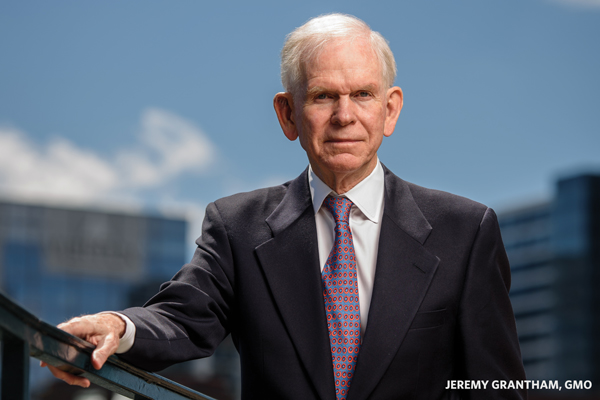Powerful bull markets like this one, the second longest in American history, can test value investors’ resolve. When a man many consider to be the world’s most perceptive perma-bear appears to change color, other bears take notice.
In May, GMO co-founder and chief investment strategist Jeremy Grantham sent clients a quarterly letter that proved more controversial than most of his provocative missives. Titled “This Time Seems Very, Very Different,” Grantham’s letter immediately grabbed the value investing community’s attention. The piece pointed out that equity prices have spent the last two decades oscillating at multiples 65% to 70% above their 1935-1995 norms on a remarkably consistent basis.
The two decades since 1995 have seen two violent bear markets and two very different bull markets. But Grantham identified other, equally significant trends. Notably, the Shiller CAPE (cyclically adjusted price-earnings) ratio had only reverted to its pre-1996 mean for a brief six months during the 2008-2009 financial crisis.
On the surface, his arguments appear grounded in cold, statistical reality. Yet to some value apostles, Grantham’s letter sounded as though he were capitulating to a bubble-like roaring bull market that has bedeviled value investors.
Some people, like Jim Grant, publisher of Grant’s Interest Rate Observer, called the letter an apostasy. “The world is bullish and a bear’s got to eat,” Grant wrote.
Turning the tables on Grantham, Grant argued the 78-year-old was violating the cardinal sin of money management—career risk. Loosely defined, career risk occurs when a money manager decides to run with the crowd and willingly make the same mistake as other mainstream asset managers, secure in the knowledge that he can’t get fired, even if he is wrong, because there are simply too many other lemmings afflicted by the same pandemic of groupthink.
Grant’s accusation amused the British-born Grantham, who believes some members of the value cult need to look at the facts. Furthermore, Grantham doesn’t think the world is bullish at all. Quite the opposite.
Historically, he has reveled in challenging the conventional wisdom of Wall Street’s optimists, so his explanation about why equity prices remained persistently high blindsided the value crowd. After penning his May letter, Grantham discovered another factoid about trailing-12-month PE multiples, which peaked at 21 times earnings in 1929 and never reached that figure again until late 1997. “The entire block of 20 years I’m obsessed with”—1997 to 2017—“has an average PE higher than 1929. Don’t tell me that things aren’t different,” he retorts.
The Lion In Summer
August 2017
« Previous Article
| Next Article »
Login in order to post a comment








